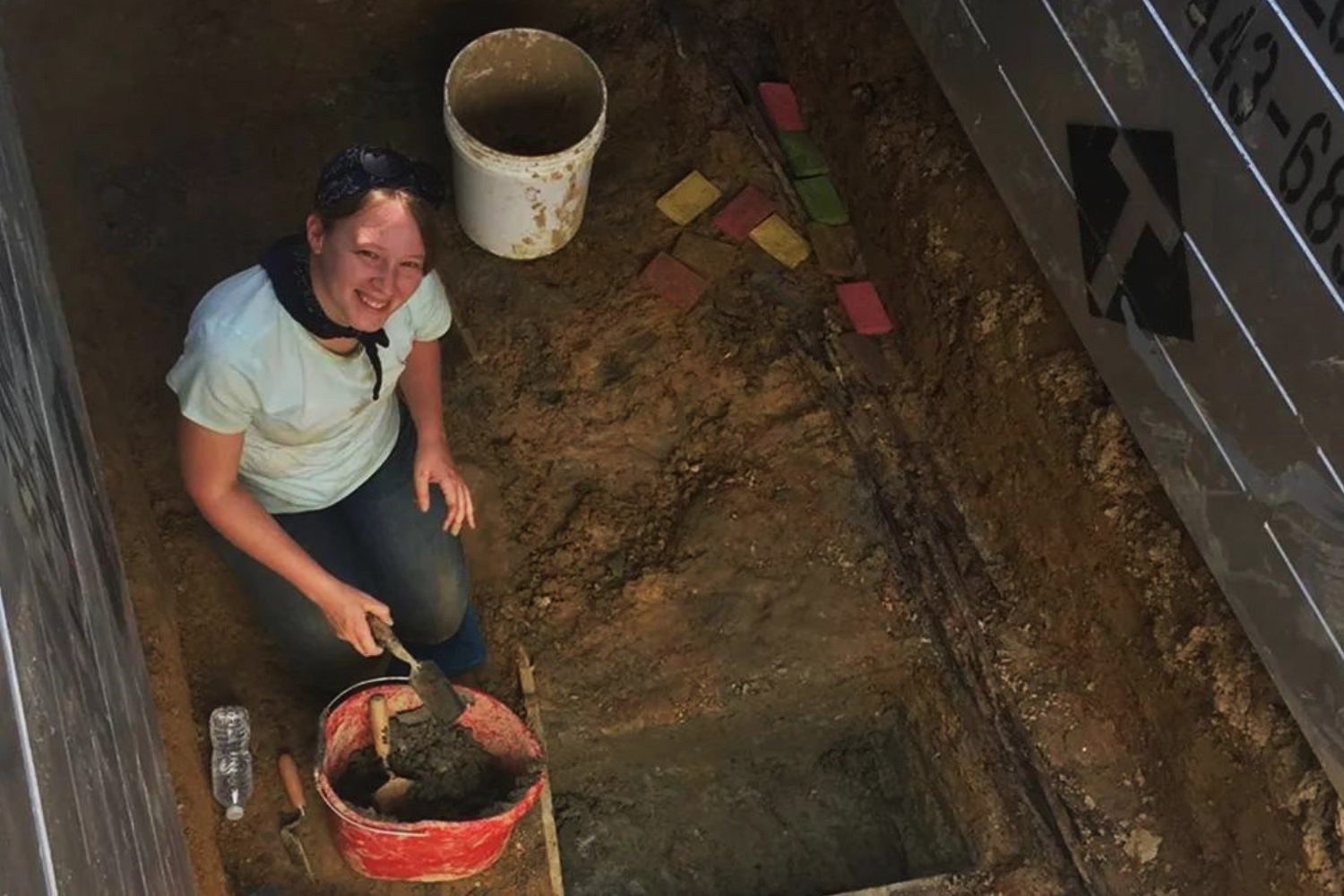
Why was Holmes' body exhumed? The story of H.H. Holmes, America's first serial killer, has fascinated many for over a century. His gruesome crimes and the infamous "Murder Castle" in Chicago are stuff of nightmares. But why dig up his body after all these years? Holmes' body was exhumed to confirm his identity and put to rest rumors that he had escaped execution. Some believed he had bribed officials and fled, leaving another man to hang in his place. By exhuming his remains, scientists aimed to use modern forensic techniques to settle the mystery once and for all. This chilling chapter in history just got a bit more eerie.
Key Takeaways:
- H.H. Holmes, America's first serial killer, had his body exhumed, confirming his identity and sparking renewed interest in his chilling crimes and mysterious life.
- Despite the exhumation, many questions about Holmes remain unanswered, fueling ongoing fascination with his story and the dark potential behind a charming facade.
The Mystery of H.H. Holmes
H.H. Holmes, often dubbed America's first serial killer, has fascinated true crime enthusiasts for decades. His infamous "Murder Castle" in Chicago was a labyrinth of horrors. Recently, his body was exhumed, sparking renewed interest in his life and crimes. Here are some intriguing facts about the exhumation and the man himself.
-
H.H. Holmes was born Herman Webster Mudgett in 1861 in New Hampshire. He later changed his name to H.H. Holmes, under which he committed his notorious crimes.
-
Holmes built a hotel in Chicago for the 1893 World's Fair, which became known as the "Murder Castle." It was designed with trapdoors, secret passages, and soundproof rooms.
-
He was arrested in 1894 for insurance fraud, which eventually led to the discovery of his more heinous crimes.
-
Holmes confessed to 27 murders, but some estimates suggest he may have killed up to 200 people.
The Exhumation Process
The exhumation of Holmes' body was a complex and highly anticipated event. It aimed to confirm his identity and unravel some of the mysteries surrounding his death.
-
Holmes was executed in 1896 and buried in an unmarked grave in Philadelphia's Holy Cross Cemetery.
-
In 2017, his body was exhumed to address rumors that he had escaped execution and someone else was buried in his place.
-
The exhumation required a court order, which was granted after a petition from his descendants.
-
Holmes' coffin was encased in concrete, a measure he requested to prevent grave robbing.
Findings from the Exhumation
The exhumation provided some surprising insights and confirmed several long-held beliefs about Holmes.
-
His body was remarkably well-preserved due to the concrete encasement, which limited decomposition.
-
DNA testing confirmed his identity, putting to rest the rumors that he had escaped execution.
-
Holmes' mustache was still intact, a testament to the preservation conditions of his grave.
-
The exhumation revealed no signs of tampering, supporting the theory that Holmes did not escape his fate.
Holmes' Legacy and Impact
Holmes' life and crimes have left a lasting impact on popular culture and the field of criminal psychology.
-
Holmes is often compared to Jack the Ripper, another infamous serial killer from the same era.
-
His story has inspired numerous books, movies, and TV shows, including Erik Larson's "The Devil in the White City."
-
Holmes' methods and psychological profile have been studied extensively in criminology courses.
-
The "Murder Castle" was demolished in 1938, but its legend lives on in true crime lore.
Unanswered Questions
Despite the exhumation and extensive research, many questions about Holmes remain unanswered.
-
The exact number of his victims is still unknown, with estimates ranging widely.
-
Holmes' motives for his crimes remain a subject of speculation among historians and psychologists.
-
Some believe he had accomplices, though no concrete evidence has been found.
-
The fate of many of his victims remains a mystery, as their bodies were never recovered.
Theories and Speculations
Holmes' life and crimes have given rise to numerous theories and speculations, some more plausible than others.
-
Some theorists suggest Holmes was Jack the Ripper, though this has been widely debunked.
-
Others believe he was part of a larger criminal network, using his hotel as a front for more extensive operations.
-
Holmes' fascination with anatomy and medicine has led some to speculate he was conducting experiments on his victims.
-
Theories about hidden treasures in the "Murder Castle" persist, though none have been found.
Modern-Day Interest
Holmes continues to captivate the public's imagination, with new developments and discoveries keeping his story alive.
-
True crime podcasts and documentaries frequently feature Holmes, exploring different aspects of his life and crimes.
-
Historians and researchers continue to uncover new information about his activities and victims.
-
Holmes' story is a popular subject for tours and exhibits in Chicago, drawing thousands of visitors each year.
-
The exhumation has sparked renewed interest in forensic science and historical investigations.
The Human Side of Holmes
While Holmes is often depicted as a monster, there are aspects of his life that reveal a more complex individual.
-
Holmes was married three times, and had a son with his first wife, Clara Lovering.
-
He was a skilled con artist, using his charm and intelligence to deceive his victims and evade capture.
-
Holmes studied medicine at the University of Michigan, where he developed an interest in human anatomy.
-
Despite his crimes, he maintained a calm and composed demeanor, even during his trial and execution.
The Final Chapter
The exhumation of Holmes' body has closed some chapters of his story while leaving others open for further exploration.
-
Holmes' descendants have mixed feelings about their infamous ancestor, with some seeking to distance themselves from his legacy.
-
The exhumation has provided closure for some, confirming that Holmes did not escape justice.
-
Holmes' story serves as a cautionary tale, reminding us of the dark potential that can lurk behind a charming facade.
The Final Word on Holmes' Exhumation
Holmes' body exhumed in 2017 revealed some surprising truths. Despite his notorious reputation, the exhumation confirmed his identity through dental records, debunking theories that he escaped execution. This process also provided closure to many who speculated about his fate. The exhumation was a significant event in forensic history, showcasing the power of modern science in solving age-old mysteries. It also highlighted the enduring fascination with one of America's most infamous criminals. Holmes' story continues to captivate, reminding us of the dark chapters in history and the relentless pursuit of truth. Whether you're a history buff or a true crime enthusiast, Holmes' exhumation offers a compelling glimpse into the past, blending science, mystery, and history in a way that's hard to ignore.
Frequently Asked Questions
Was this page helpful?
Our commitment to delivering trustworthy and engaging content is at the heart of what we do. Each fact on our site is contributed by real users like you, bringing a wealth of diverse insights and information. To ensure the highest standards of accuracy and reliability, our dedicated editors meticulously review each submission. This process guarantees that the facts we share are not only fascinating but also credible. Trust in our commitment to quality and authenticity as you explore and learn with us.


